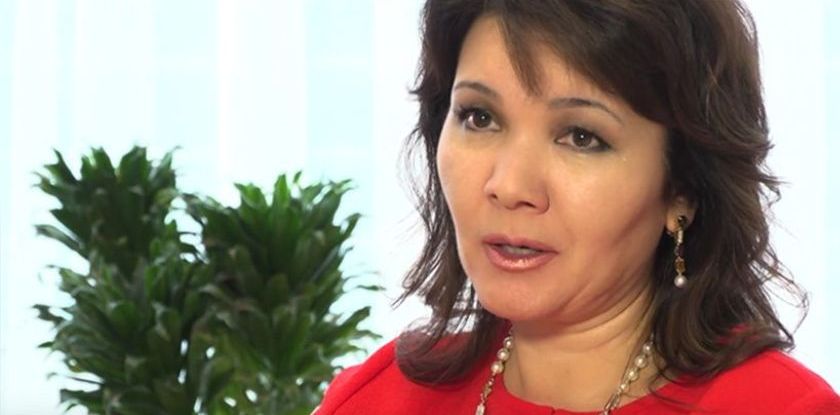In the article How Umut Shayakhmetova drowned National bank, we showed how the chair of Halyk Bank had unknowingly tarnished the reputation of the National Bank of Kazakhstan and its head Daniyar Akishev by proving, in numbers and facts, that the regulator’s word means nothing especially when dealing with the dangerous or sensitive subjects for Akorda.
However, at the same Almaty press-conference held on August 23, 2017, Ms. Shayakhmetova touched upon yet another delicate issue – how and why the state, once again, decided to save a private financial organization. Since the most detailed recollection of the event was given by Forbes-Kazakhstan in their article, we will cite it here again (like we did in our previous publication on the topic).
Here is a quote from the chairperson of Halyk Bank.
“There were three possible scenarios of how the events were to unfold – the bankruptcy, the nationalization, and the financial assistance to Kazkom. The first two would have cost more than 2.4 trillion tenge to the state, said Umut Shayakhmetova. As of January, 1 2017, the volume of physical persons’ deposits in Kazkom amounted to more than 1.5 trillion tenge, the volume of the national companies’ deposits amounted to more than 1.5 trillion tenge. The bank received the state aid (stabilization loan) from the National Bank amounting to 400 mln tenge. The United Accumulative Pension Fund invested 400 bln tenge in bonds and deposits. In 2015, the Problem Loans Fund deposited 200 bln tenge. Moreover, Kazkom had an external loan amounting to about $2 bln. Therefore, we have more than 4.5 trillion tenge for which, if the bank were nationalized, the state would have been responsible.
Thus, as of January 1, 2017, Kazkommertsbank had about 2,5 trillion tenge of the state funds on its deposits. If it went bankrupt, the total losses of the state would have been equal or comparable to the amount of the expenditures paid for the bank’s salvation (they, as we know, did amount to 2,4 trillion tenge). So, it looks like the bank was saved only to be later sold to Halyk Bank for 2 tenge.
Therefore, the state was rescuing not so much its funds as the country’s reputation together with the physical persons’ deposits and the loans received from abroad. Such a scenario seems quite feasible. Still, to verify this hypothesis, we would have to have access to the Kazkommertsbank internal information, to analyze its loan portfolio, to correctly evaluate the risks, to weigh the other significant factors which, one would agree, lies only within the power of the regulator.
The bankers say that Kazkommertsbank’s problems no longer exist. Halyk Bank, however, has now become too big an institution for the country’ financial sector which can be seen by calculating its market share. It means that, given the open and relatively fierce competition in the banking sector, such a monopoly will have great difficulty to stay afloat.
Besides, as we pointed out in the previous article, we still do not know what kind of “black swans” are hiding in the balance of the bank belonging to Dinara and Timur Kulibayevs. Therefore, it is possible that, in a year or two (at a maximum), the question of this systematically-important financial institution’s survival will, once again, be on Akorda’s agenda.
Thus, there is a risk that the Kazakh authorities, via the National Bank of Kazakhstan, will try to help Halyk Bank ahead of time. It can happen, for example, in the form of freeing the market from the competitors (“luckily”, the regulator has more than enough reasons for suspending or terminating banks’ licenses). So, we should anticipate that the National Bank will get busy. Under the pretext of sanitizing the banking sector, the regulators, once again, will be forced to “clean” it following the example of their Russian colleagues.
Read also: Kazkom was sold questions remain, Why does Kazkom need delisting?, “Disrobing” Rakishev, What is behind onslaught of Kazkom?, Who will gain from the merger of banks?, Which banks will the national fund save?, A giant alliance, Halyk and Qazkom in one bank.




